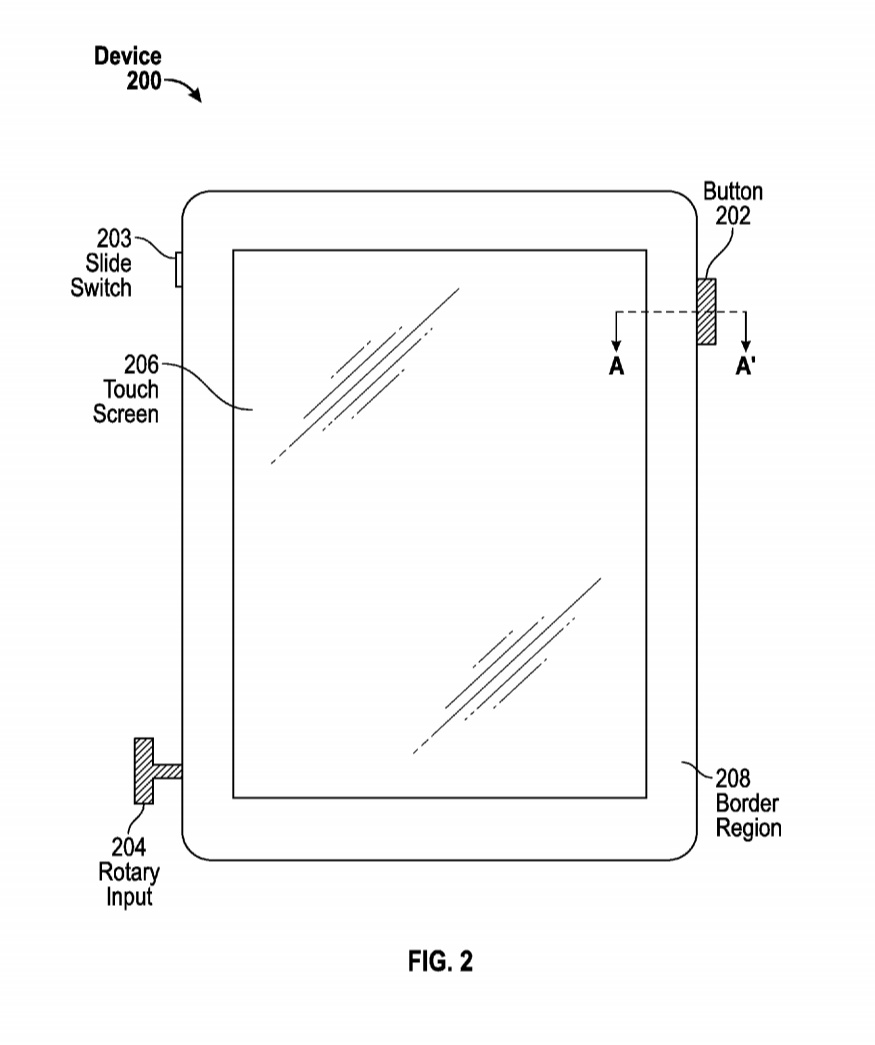An Apple iPad Pro with a digital crown? Don’t laugh just yet.
The Apple Watch was released more than a year ago, featuring a curious concept that borrows from both worlds of analog watches, and PCs: the digital crown.

Not unlike a PC’s scroll wheel, the digital crown serves the purpose of scrolling through content in a linear fashion, either horizontally or vertically, and it’s likely the most accurate way to scrub through web pages, image slides, and other linearly organized container. When it was first introduced with the Apple Watch, some questioned the necessity of a Digital Crown paired with a touchscreen, especially one as accurate as the one on the Apple Watch. Alas, the Digital Crown did catch on with discrete success as a recognizable signature component of the Apple Watch experience.
One interesting factoid about the Digital Crown has recently surfaced, as the United States Patent and Trademark Office has published the actual patent in which the Digital Crown is featured. According to the document, the Digital Crown isn’t necessarily restricted to be an Apple Watch exclusive, but it might even be implemented in other devices, including future iPad Pros, iPods and iPhones.
Will it happen? Should it happen? Apparently, someone has already thought of it, at least within the conceptual realm of an iPhone 7 wishlist that’s getting longer by the day, as we approach the 10th anniversary of the iPhone.
Will it happen?
Unfortunately, implementing a Digital Crown on devices bigger than an Apple Watch presents glaring usability challenges. The main difference between a Digital Crown and a regular flat side button, is the type of mechanical stress applied to each different input method.
Pressing a button is a linear process which occurs by exerting force towards an object with a greater mass. By which token, the chance of wear and tear on the button is minimal. By contrast, the force required to operate a Digital Crown on an iPad or an iPhone, is focused on the Digital Crown itself, a small object with insignificant mass, which is more susceptible to mechanical stress than a regular button.
Another challenge, more specific to the iPhone, is how to operate the Digital Crown when the iPhone is enveloped in a case. The area surrounding the Crown would have to feature a cutout big enough to operate it comfortably, however, this would leave the rotary input vulnerable to direct impact damage.
Finally, there is word of Apple planning to start working on waterproof iOS devices in the future, as noted from a number of patents published in the past two years, which makes the introduction of external moving mechanisms like the Digital Crown, conceptually problematic.
Should it happen?
Realistically, it’s hard to imagine a Digital Crown on an iPad Pro, as its footprint would be so minimal, to a point of being completely invisible to most users, in consideration that one of the main selling points of Apple devices is to be obsessively thin. At a mere 6.1mm, adding a scroll wheel on the edge of an iPad Pro’s body would be pointless.
Lastly, Apple has put considerable resources into developing one of the most advanced touchscreens in the world, which would make the addition of a mechanical input device, somewhat of an unnecessarily retro touch.